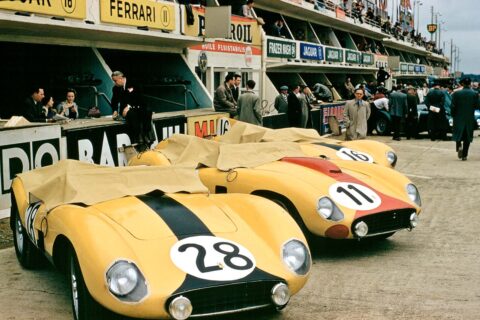
The World Endurance Championship recently visited Belgium for a highly exciting Spa-Francorchamps 6 Hours.
Victory went to Porsche, but not thanks to one of its works cars, instead the British Jota Sport team – as unlike in Formula 1, here persists a fine tradition of privateer entries.
Another such star in that race was AF Corse’s yellow Ferrari – echoing one of the more, well, enduring and prosperous privateer teams of the past, which rather appropriately was proudly Belgian.
Enjoy full access to the complete Autocar archive at themagazineshop.com
Privateer teams and drivers often have unexpected origins, and our story here starts with the trumpet-playing leader of a jazz band called the Clay Pigeons.
Octave John Claes (how fitting a name!) was born in London in 1917 to a Belgian father who had fled the war and a Scottish mother, and he used family business riches to set himself up as a touring musician.
In 1947, he was in Lyon, France, when he happened to meet a pair of Brits who were there to compete in a grand prix and tagged along with them, acting as a translator.
It was love at first sight: having watched the famous veteran Louis Chiron triumph in a Talbot-Lago, Claes set about learning to race, making his debut in the 1948 Frontières Grand Prix at Chimay in Belgium in a Talbot-Lago Spéciale sports car, then teaming up with Emile Cornet to enter the veteran racer’s Veritas Meteor (a German Formula 2 car) in the Paris 12 Hours, finishing eighth.
Together the duo formed Écurie Belge (‘Team Belgium’), in quick order adding a second Meteor, a sports Veritas and a new Talbot-Lago T26C F1 car. All were painted bright yellow, of course – corporate sponsorship having yet to kill the tradition of using national colours. These were to be raced by them and various other Belgians deprived of chances in top-line machinery.
Claes was “not a front-rank grand prix driver, although always a very welcome entrant for his cheery disposition and thoroughly chivalrous approach to the sport”, reported Autocar at the time, the British-Belgian amateur usually finishing at the back of the pack.
His greatest successes came in 1951, when he won the Frontières GP in a Simca-Gordini and the Liège-Rome-Liège rally alongside journalist Jacques Ickx (father of legendary racer Jacky Ickx), and in 1953, when Claes won that same rally “heroically without relief for 52 hours” after his co-driver fell so ill that he needed medicine at every control stop.
In 1955, Claes and Jacques Swaters ended the friendly rivalry between their respective Écurie Belge and Écurie Francorchamps, amalgamating them into Écurie Nationale Belge (ENB), with Roger Laurent, André Pilette, Paul Frère and talented young Olivier Gendebien the other founder drivers.
